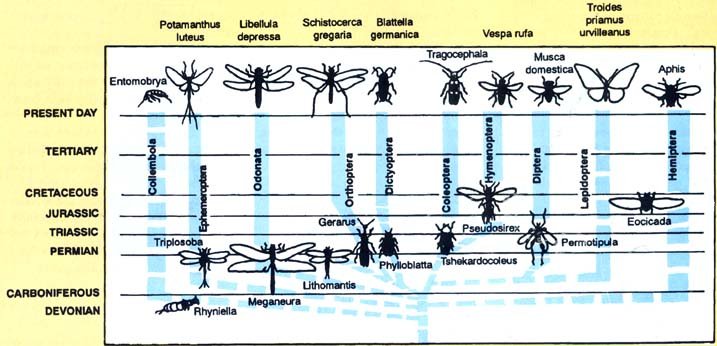
How to Read an Evolutionary Family Tree
Originally published in Creation 18, no 3 (June 1996): 52.
The dotted lines on evolutionary family trees reinforce the fact that there is no evidence to prove the existence of common ancestors for the animals shown.
Charts and diagrams can be wonderful aids in giving clarity and visual reinforcement to a point, or lesson, one is trying to make.
However, these explanatory tools can also be confusing, and in some cases misleading, when the illustrations and their implications are not fully explained.
Such is the case with charts that supposedly show the evolutionary relationship of creatures.
A typical illustration, such as the one shown here involving insects, will try to convince you how a certain group of creatures has evolved from a common ancestor in the past.
However, these charts almost always use dotted lines when the supposed evolutionary path is unknown.
In these instances, you should simply ignore the dotted lines. By doing so, you will usually be left with a diagram showing that the different types of species depicted (in the case of this diagram, insects) have remained basically the same throughout history.

Without the dotted lines, this insect chart simply shows the diversity within a kind, revealing that today's insects haven't really changed from so-called 'ancient' insects.
The dotted lines reinforce the fact that there is no evidence to prove the existence of a common ancestor for the insects shown.
Go to your local library and check all the evolutionary trees you can find. You'll find this a revealing and worthwhile exercise.
Web links
Recommended Resources

Answers in Genesis is an apologetics ministry, dedicated to helping Christians defend their faith and proclaim the good news of Jesus Christ.
- Customer Service 800.778.3390
- © 2024 Answers in Genesis


